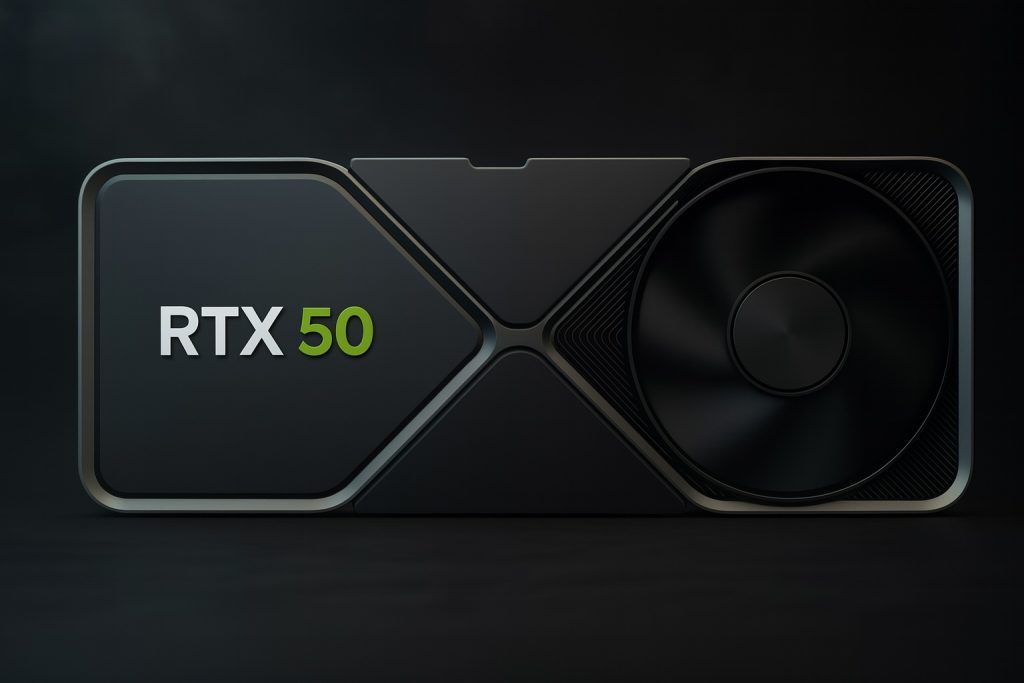As Bitcoin wrestles with a sharp pullback below the psychologically important $100,000 level, a very different kind of risk is dominating today’s narrative: quantum computing.
On November 14, 2025, the Bitcoin community finds itself at the intersection of three powerful storylines:
- Rapid progress from IBM and Google in quantum hardware
- A growing debate over whether Bitcoin addresses are “quantum-safe”
- Viral social media rumors claiming a seed phrase can unlock Satoshi Nakamoto’s alleged $111 billion fortune
At the center of the discussion are Ledger’s CTO Charles Guillemet and on‑chain analyst Willy Woo, whose contrasting but partially overlapping messages are shaping how investors think about the future security of their BTC. [1]
Below is a breakdown of what actually changed this week, what’s just hype, and what Bitcoin holders can realistically do right now—without panic‑selling into volatility.
Bitcoin Price Wobbles as Whales Sell and Leverage Unwinds
The quantum conversation is unfolding against a backdrop of brutal price action.
Data from Korean outlet Maeil Business Newspaper shows that long‑term holders (LTHs)—so‑called “big hands”—have sold around 815,000 BTC in the last 30 days, the largest wave of long‑term distribution since January 2024. [2]
Key points from today’s market coverage:
- Bitcoin has dropped from about $108,000 to near $97,000 over the last three days. [3]
- The sell‑off has been driven by:
- Heavy long‑term holder distribution
- Forced liquidations of over‑leveraged long positions, particularly on Binance
- Rising U.S. dollar strength and regulatory pressure weighing on risk assets [4]
U.Today reports that Glassnode recorded roughly $600 million in realized losses in a single hour as mid‑term holders capitulated during the plunge. Yet longtime bull Samson Mow, known for his “$1 million BTC” thesis, is dismissing the move as an “obvious bear trap,” arguing that spot buyers quickly absorbed the forced sell‑off once liquidations cleared. [5]
At the macro level, a detailed analysis on WEEX published in the early hours of November 14 highlights just how politicized Bitcoin’s trajectory has become. It notes: [6]
- Galaxy Digital has cut its year‑end BTC target from $185,000 to $120,000
- JPMorgan still sees a path to $170,000 in the next 6–12 months
- Ongoing U.S. government shutdown dynamics and the 2026 midterm election outlook are reshaping liquidity expectations and, by extension, crypto risk appetite
Crucially, the piece cites Willy Woo’s view that the traditional “double‑cycle resonance” of halvings + liquidity is fading, and that macro conditions will drive Bitcoin more than its internal cycle structure going forward. [7]
In other words, price is being smashed lower by leverage and macro—just as quantum fears spike.
Quantum Warning Bells: IBM, Google and the Bitcoin “Doomsday Clock”
A big reason Bitcoin Twitter and crypto media are buzzing this week is fresh progress in quantum computing from IBM and Google.
On November 12, IBM announced a major milestone: its new “Loon” quantum chip and supporting architecture, which it says put the company on track for practical “quantum advantage” by 2026 and fault‑tolerant quantum systems by 2029. [8]
Key takeaways from IBM‑focused coverage:
- New processors “Loon” and “Nighthawk” implement advanced error‑correction and more complex circuits.
- IBM expects its Nighthawk system to outperform classical supercomputers on select tasks as early as late 2026.
- Crypto commentators are warning that if IBM’s roadmap holds, we may be entering the decade where cryptographically relevant quantum computers become realistic. [9]
Google, meanwhile, is still riding the wave of its Willow 105‑qubit chip:
- A Tom’s Hardware report describes how Google’s “Quantum Echo” algorithm, running on Willow, solved a complex physics simulation 13,000x faster than a leading supercomputer, marking one of the clearest demonstrations yet of real‑world quantum advantage. [10]
- Specialized analysis from QuSecure notes that breaking Bitcoin’s encryption in a day is estimated to require around 13 million qubits—far above Willow’s 105—but stresses that each new leap shrinks the timeline and widens the urgency for post‑quantum upgrades. [11]
The narrative has been further inflamed by the so‑called “Quantum Doomsday Clock”, a public tool that recently set March 8, 2028 as the date when a cryptographically relevant quantum computer could, in theory, crack Bitcoin’s elliptic‑curve signatures. [12]
However, not everyone agrees with the alarmist framing:
- Marathon Digital (MARA) argues that current quantum machines are still decades away from breaking Bitcoin in practice, estimating that an hour‑scale ECDSA break would need around 317 million physical qubits, versus roughly 100‑ish qubits today. [13]
So the landscape is split:
- Alarmists point to IBM’s 2029 fault‑tolerance goal and the 2028 “doomsday” projections.
- Skeptics argue we are still orders of magnitude short of the qubits—and error rates—needed to actually steal coins on mainnet.
Right in the middle of this storm, Ledger’s CTO and Willy Woo are trying to map out what “responsible” preparation looks like.
Ledger CTO: Quantum Computers Are a Threat, But They Can’t Break Bitcoin Yet
On November 12, U.Today published comments from Charles Guillemet, CTO of hardware wallet giant Ledger, under the headline “Quantum Computer Unlikely to Break Bitcoin in Near Term.” [14]
His message is nuanced:
- Today’s quantum computers are not strong enough to break Bitcoin’s existing cryptography.
- However, ignoring the threat would be irresponsible, especially given credible roadmaps from IBM and Google.
- Guillemet advocates designing a “migration path” to quantum‑resistant cryptography at the protocol level, including a plan for coins presumed lost—such as Satoshi’s estimated 1.1 million BTC. [15]
He also stresses the technical trade‑offs:
- Lattice‑based post‑quantum algorithms, widely viewed as prime candidates for future standards, haven’t “stood the test of time” and introduce new uncertainties. [16]
- Hash‑based schemes feel robust but “archaic” and may not integrate cleanly with BIP32, the hierarchical wallet structure used by most modern Bitcoin wallets. [17]
In short: Ledger’s CTO is telling users not to panic about a near‑term quantum break, but to support a thoughtful, protocol‑level upgrade path that will inevitably come.
Willy Woo’s “Quantum‑Safe” Guide: Move Off Taproot?
If Guillemet is the cautious protocol engineer, Willy Woo is the on‑chain strategist speaking directly to retail holders.
Over the past few days, Woo has released what he calls a “dummies guide to being quantum safe,” arguing that in the coming “age of big scary quantum computers” users must protect not only their private keys (seed phrase) but also their public keys. [18]
Here’s the core of Woo’s argument, based on reporting from BeInCrypto, Cryptonews and Cointelegraph‑syndicated coverage: [19]
- Taproot (bc1p…) addresses embed the public key directly into the address.
- If a future quantum computer can derive private keys from exposed public keys fast enough, those coins could be at risk.
- SegWit (bc1q…) and legacy (1… or 3…) addresses hide the public key behind a hash until the moment you spend.
- This buys “years of protection,” provided you don’t reuse addresses or leave coins sitting in already‑spent outputs. [20]
Woo’s interim recommendation:
- Migrate coins from Taproot addresses to fresh SegWit or legacy addresses whose public keys are not yet on‑chain. [21]
- Move funds when the network is uncongested, to minimize the time your public key is exposed in the mempool. [22]
- After migration, avoid spending from the new addresses until quantum‑resistant upgrades are deployed, which Woo loosely suggests could take around seven years. [23]
Woo emphasizes that:
- ETFs, corporate treasuries and exchange cold storage can be secured by custodians updating their signing schemes.
- The biggest quantum victims would be old pay‑to‑public‑key (P2PK) coins, such as Satoshi’s early stash and other “lost” coins that already revealed their public keys long ago. [24]
The Backlash: “This Isn’t Real Quantum Safety”
Not everyone is convinced.
- Capital markets analyst Charles Edwards warns that Woo’s plan is not truly quantum safe, arguing it relies on ordinary users behaving “perfectly” and could give a false sense of security while delaying real upgrades. [25]
- Former Bitcoin Core developer Jonas Schnelli agrees that hash‑based addresses buy “years of protection” relative to Taproot, but notes that once you broadcast a spend, your public key hits the mempool, where a fast quantum attacker could try to front‑run confirmation. [26]
- Developer Anakun points out that a more comprehensive migration plan is already being discussed under BIP‑360, which would introduce NIST‑approved post‑quantum signatures (ML‑DSA) and eventually invalidate non‑quantum signatures over a multi‑year timeline. [27]
The debate is no longer whether quantum matters—it’s about how fast to act and who should do what: individual users, wallet providers, or the base protocol.
Whales Are Moving Coins – Panic Selling or Quantum “Housekeeping”?
Adding fuel to the fire, on‑chain data has revealed a series of huge coin movements by long‑dormant whales and early adopters over the last week.
Some headlines framed this as billionaires dumping Bitcoin into weakness. But coverage on TheStreet and Yahoo Finance paints a more subtle picture: according to on‑chain analysts like Woo, at least part of this activity looks like “housekeeping” ahead of the quantum era, not outright capitulation. [28]
Combined with the CryptoQuant data showing 815,000 BTC sold by long‑term holders in a month, the pattern likely mixes:
- Genuine profit‑taking near six‑figure prices
- Forced liquidations from over‑leveraged traders
- And pre‑emptive UTXO reorganizations, for example:
- Consolidating dust inputs
- Reducing address reuse
- Migrating away from Taproot or older formats with exposed public keys
To retail eyes, all of this just looks like “whales selling.” To protocol‑aware analysts, it may be part of a messy, market‑driven front‑run of future quantum migration, blending security hygiene with old‑fashioned profit.
X Trending Story: No, a Seed Phrase Can’t Magically Unlock Satoshi’s Coins
The quantum panic has been amplified by viral misinformation.
A trending X topic this week centers on a post claiming that a leaked 24‑word seed phrase could unlock Satoshi Nakamoto’s estimated 1.1 million BTC, roughly $111 billion at recent prices. X’s own summary (powered by Grok) now labels the claim false: [29]
- Satoshi’s early coins from 2009–2011 mostly used individual private keys, not the BIP‑39 mnemonic seed standard introduced years later.
- There are roughly 22,000 separate addresses linked to the early “Patoshi pattern” mining, each with its own key.
- No movements have been detected from those addresses for over a decade, and the sheer size of the 256‑bit keyspace makes random brute‑forcing effectively impossible with classical hardware. [30]
The viral seed‑phrase rumor is a perfect example of how quantum FUD and misunderstanding of wallet technology can blend into social‑media hype, confusing newer investors.
What Bitcoin Holders Can Realistically Do Today
None of this means you should smash the sell button because IBM or Google published a new quantum paper. At the same time, doing nothing forever is not a plan.
Here’s a pragmatic, non‑panic checklist based on today’s expert commentary:
1. Know Which Addresses You’re Using
- Check whether your main wallets use Taproot (bc1p), SegWit (bc1q) or legacy (1 / 3) addresses.
- If you’re heavily using Taproot for long‑term cold storage, be aware that your public keys are already exposed on‑chain once you transact, making those coins the first in line for future quantum risk. [31]
2. Consider Gradual Migration, Not a Fire Drill
- Following Woo’s thinking, gradually consolidating into fresh SegWit addresses (bc1q) that have never been spent from can offer a temporary security margin, especially if you avoid address reuse. [32]
- However, this is not a silver bullet, and migration involves on‑chain fees and operational risk. Don’t rush transactions during congestion or panic. [33]
3. Use Reputable Wallets and Keep Firmware Updated
- Hardware wallet providers like Ledger, Trezor and others are closely tracking quantum developments and protocol proposals.
- Ensuring your wallet firmware and apps stay up‑to‑date is likely to be more impactful than obsessing over theoretical qubit counts. [34]
4. Avoid Self‑Inflicted Risks
- Never share your seed phrase, regardless of wild claims about Satoshi coins or “quantum unlocks.”
- Be skeptical of any tool or service that promises instant quantum protection in exchange for you importing your seed or signing complex transactions.
5. Follow Protocol‑Level Discussions
- Keep an eye on proposals like BIP‑360 and other post‑quantum signature schemes being researched for Bitcoin. [35]
- In the long run, true security will come from network‑wide upgrades, not ad‑hoc tricks.
And, of course, none of this overrides basic risk management: position sizing, diversification and the understanding that Bitcoin is still a volatile, experimental asset.
Outlook: Bitcoin’s Next Chapter is Macro‑ and Quantum‑Driven
As of November 14, 2025, the Bitcoin narrative is being pulled in two directions:
- Here and now, BTC is reacting to a strong dollar, political uncertainty, massive whale selling and cascading liquidations. [36]
- Over the horizon, serious players—IBM, Google, Ledger, core developers, quantum‑security companies and analysts like Woo—are trying to position the network for a world where quantum computers can no longer be treated as pure science fiction. [37]
The good news is that the consensus among both cautious optimists (like Guillemet) and outspoken strategists (like Woo) is that Bitcoin can adapt:
- Upgrading its signature scheme and address formats
- Implementing post‑quantum cryptography
- Freezing or migrating vulnerable UTXOs before any real‑world attack is feasible [38]
The real risk may not be that quantum computers suddenly “hack Bitcoin” on some arbitrary 2028 deadline, but that misinformation, rushed migrations and poorly coordinated upgrades cause avoidable losses along the way.
For now, the most balanced stance for informed holders is:
Treat quantum as a serious long‑term engineering challenge,
not as a reason to dump your coins into a leveraged liquidation cascade.
Stay curious, verify claims (especially viral ones), and keep an eye on how both the macro environment and the protocol‑level quantum roadmap evolve over the next few years.
References
1. u.today, 2. www.mk.co.kr, 3. u.today, 4. www.mk.co.kr, 5. u.today, 6. www.weex.com, 7. www.weex.com, 8. www.reuters.com, 9. www.weex.com, 10. www.tomshardware.com, 11. www.mara.com, 12. finbold.com, 13. www.mara.com, 14. u.today, 15. u.today, 16. u.today, 17. u.today, 18. cryptonews.com, 19. beincrypto.com, 20. cryptonews.com, 21. beincrypto.com, 22. beincrypto.com, 23. beincrypto.com, 24. beincrypto.com, 25. beincrypto.com, 26. cryptonews.com, 27. cryptonews.com, 28. www.thestreet.com, 29. x.com, 30. x.com, 31. cryptonews.com, 32. beincrypto.com, 33. cryptonews.com, 34. u.today, 35. cryptonews.com, 36. www.mk.co.kr, 37. www.reuters.com, 38. u.today










